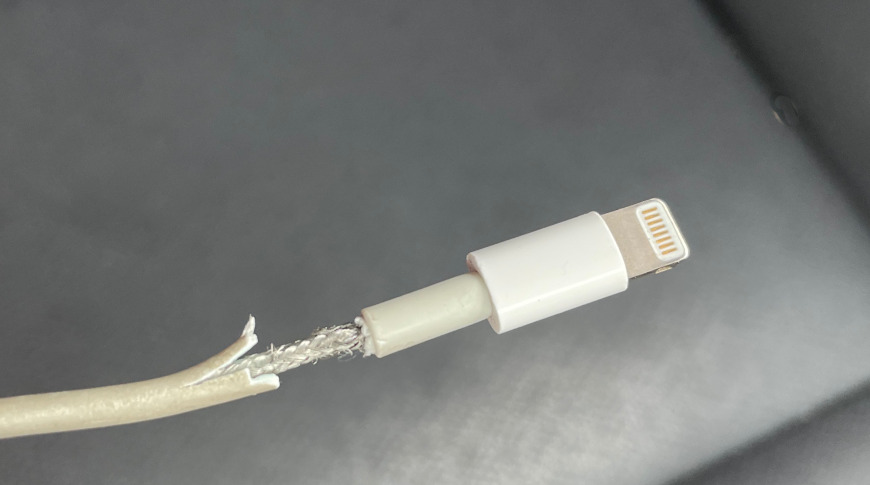If you’ve ever had an iPhone Lightning cable in your car, you already know how fragile they are. Apple may now have a solution that can also protect any type of cable.
Apple will never say that Lightning cables have a death wish, but it came close to a newly revealed patent application that really tries to fix the problem. “Cable with Variable Stiffness” doesn’t mention Lightning once, nor does it say anything that comes close to the word “worn out”.
“It is well known that bending the cable close to the termination point can cause undesired tension in the wire connections, which can lead to cable failure”, he admits. “Consequently, it is common to provide a strain relief sleeve made of a rigid material around the end of the cable.”
Apple’s descriptions apply to many types of cables, as well as their criticisms of current solutions.
“The rigid material creates a localized increase in the flexural strength of the cable, thus relieving tension in the wire connections”, he continues. “In addition to making the cable locally stiffer, the strain relief sleeve also makes the cable thicker at the ends. In some cases, the added thickness may not be desired.”
If you’ve been using Apple equipment for a long time, you may remember how Apple slightly thickened Lightning cables. This probably meant that they were slightly less prone to damage. As a side effect, this meant that sometimes they no longer fit into channels machined by iPhone booths by third parties.
Apple’s new proposal is a development of the idea of ”strain relief” and extra cable thickening in general. “A cable can include a cable core surrounded by an outer sleeve of uniform thickness,” says the patent application.
“[It further has] a first longitudinal section having a first stiffness (for example, corresponding to a flexible cable), a second longitudinal section having a second stiffness (for example, corresponding to a rigid cable) and a third longitudinal section between the first and second longitudinal sections , “says Apple.

Detail of the patent application showing a combination of cable layers and protective cover
The first cable has a degree of stiffness not specified, while the second is more rigid. And the “stiffness of the third longitudinal section varies between the first stiffness and the second stiffness”. In fact, what this does is extend the “strain relief to the cable”.
Most of the patent application describes different possible materials and also tries to define the rigidity. “For example, minimum radius of curvature, defined as the smallest radius at which the cable can be bent without twisting, is a well-known measure of cable stiffness,” says Apple, “and a minimum radius of curvature can be defined in relation to the cable diameter. ”
“Increasing the radius of curvature corresponds to increasing the stiffness. Depending on the specific design of the cable, the minimum radius of curvature can be, for example, 8 to 12 times the diameter of the cable”, he continues.
The patent application is credited to seven inventors, including Christopher S. Graham. His previous related work includes patents granted on “shielding for multi-coil wireless power transfer systems” and “housings for electronic devices”
